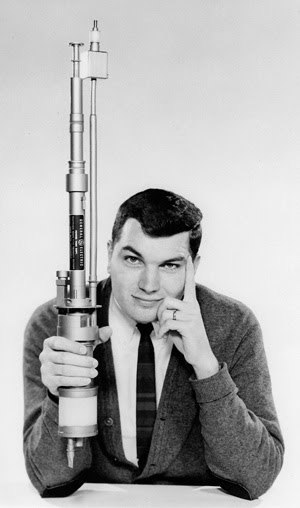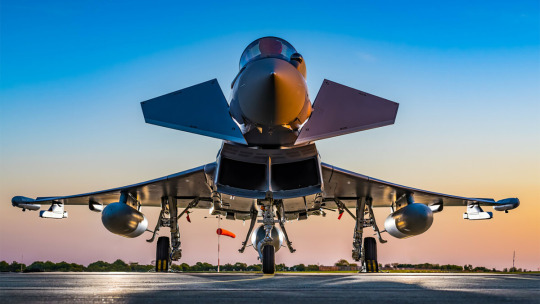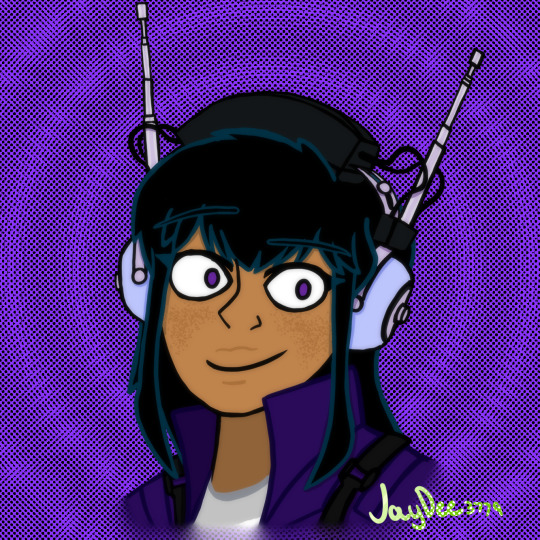#rf radio antenna
Explore tagged Tumblr posts
Text

#433 mhz antenna#rf antenna#rf antenna manufacturer#wireless rf#rf antenna types#rf connector for tv#rf booster antenna#rf antenna booster#solid rf signal booster#rf to antenna connector#433mhz rf antenna#433mhz rf module range#433mhz transmitter antenna#433mhz rf transmitter and receiver antenna#433 mhz rf module antenna#rf connector antenna#outdoor rf antenna#rf radio antenna#lmr400 coaxial#433mhz remote control arduino#antenna for rf module 433mhz#mmcx connector antenna#helical rf antenna#rf antenna suppliers#rf antenna cables
0 notes
Photo

Novel antenna design with four concentric spirals, each having 2.5 turns. Rf power is connected to the centre and ground is at the outer connectors
Gans, Timo & Crintea, Dragos & O'Connell, Deborah & Czarnetzki, Uwe. (2007). A planar inductively coupled radio-frequency magnetic neutral loop discharge. Journal of Physics D: Applied Physics. 40. 4508. 10.1088/0022-3727/40/15/021.
65 notes
·
View notes
Text
Are EMF’s safe? (come, child, ruin your night)
y’all ready for this? I’m not anti-5G, btw turn your wifi off before bed and maybe stop keepin’ ya phone so close all the time
But like... why, though?
I've had my suspicions about cell towers being hazardous to health for a few years now and felt convinced enough to not bother researchin' it for confirmation. Now that I'm blah blah blah, I decided to actually bother. Since it got kinda heavy, I had to ask myself if I should put in hella more effort creatin' a damn research report of sorts for y'all asses present the info for others like it's a damn PSA. And my conscious won. T~T
But like... what, though?
A base station (aka: cell phone tower) is that shit you see everywhere but never notice. It's usually tall af and has panel antennas on it. It's "used for the transmission and reception of the radio signals between the mobile phones and the network." The problem with 'em is the electromagnetic field (EMF) their equipment can give off... for half a mile. 😐
In short, they've been found to cause health problems. Like cancer. 🤷🏿♂️
Fun fact, panel antennas can be installed on the roof/side of buildings that may be directly across the street from someone's workplace... with the antenna at their elevation. 🤷🏿♀️
Real Quick
For those who don’t trust EMF-Portal, it (sometimes) has links to the study/article. Full-text PDF can be requested directly from the authors on ResearchGate.net’s article for the study. Full-text PDF can (usually) be found online in English and German with the right search.
5 Studies
V/m = volts per meter 7191 cancer deaths were selected according to the above mentioned criterias out of a total of 22,493 cancer deaths. The most significant causes were lung cancer (19.6 %), stomach cancer (14.1 %), prostate cancer (12.6 %), and breast cancer (11.5 %). The mean electric field intensity of the measurements in 2008 was 7.32 V/m, varying from 0.4 to 12.4 V/m. At a distance of up to 100 m [328.08 ft], the absolute number of deaths was 3569, (49.6 % of all deaths), the mortality rate was 43.4 persons per 10,000 [0.43%] and the relative risk was 1.35 in relation to the mortality rate of 32.1 per 10,000 [0.32%] inhabitants of the entire Belo Horizonte municipality [in Minas Gerais, Brazil]. A mortality rate of 34.8 per 10,000 [0.35%] inhabitants was observed for the residents living within 500 m [1,640.42 ft] of the base stations; this rate decreased for residents living farther from the base stations.
—Mortality by neoplasia and cellular telephone base stations in the Belo Horizonte municipality, Minas Gerais state, Brazil; Science of The Total Environment (2011); EMF-Portal
ResearchGate.net’s article


The result of the study [of 967 permanent residents] shows that the proportion of newly developing cancer cases was significantly higher among those [320] patients who had lived during the past ten years at a distance of up to 400 metres [1,312.34 ft] from the cellular transmitter site, which has been in operation since 1993, compared to those patients living further away, and that the patients fell ill on average 8 years earlier. In the years 1999-2004, ie after five years' operation of the transmitting installation, the relative risk of getting cancer had trebled for the residents of the area in the proximity of the installation compared to the inhabitants of Naila[,Germany,] outside the area.
—The Influence of Being Physically Near to a Cell Phone Transmission Mast on the Incidence of Cancer (original title: ‘Einfluss der räumlichen Nähe von Mobilfunksendeanlagen auf die Krebsinzidenz’); Umwelt · Medizin · Gesellschaft (2004); ResearchGate.net
EMF-Portal

9 cancer cases were observed in the first period 2000 - 2004 and 14 cases in the period 2005 - June 2007 among [1,283] residents living within a radius of 400 m [1,312.34 ft] to a mobile phone base station [in Germany (Hennen, suburb of Iserlohn, Westfalia)]. The mean age of disease onset was 59.2 years in the first period and 59.3 years in the second period in comparison to the expected value of 66.4 years evaluated from the Saarland Cancer Registry. The authors concluded, that a statistically significant increase of cancer incidence was observed 5 years after the base station has been started operating.
—[Incidence of cancer adjacent to a mobile telephone basis station in Westfalia] (original title: Krebsinzidenz von Anwohnern im Umkreis einer Mobilfunksendeanlage in Westfalen - Interview-basierte Piloterhebung und Risikoschätzung); Umwelt · Medizin · Gesellschaft (2009); EMF-Portal
Area A: ≤ 350 m / 1148.3 ft from base station Area B: > 350 m / 1148.3 ft from base station Of the 622 people of area A, 8 cases of different kinds of cancer were diagnosed in a period of one year (from July 1997 - June 1998). The cancer incidence rate was 129 cases per 10,000 [1.29%] persons per year in area A compared to 16/10,000 [0.16%] in area B and 31/10,000 [0.31%] in the town of Netanya [in Israel]. Relative cancer rates for females were 10.5 for area A, 0.6 for area B and 1 for Netanya. The authors conclude that the study indicates an association between increased incidence of cancer and living in proximity to a mobile phone base station.
—Increased incidence of cancer near a cell-phone transmitter station; International Journal of Cancer Prevention (2004); EMF-Portal
ResearchGate.net

Took forever to get this damn infographic just right. >.>
A long-term study was conducted in Germany to investigate the influence of a mobile phone base station on neurotransmitters under true-to-life conditions. µW/m² = microWatts per square meter 24 out of 60 participants were exposed to a power density of < 60 µW/m², 20 participants to 60 - 100 µW/m², and 16 participants to more than 100 µW/m² . The values of the stress hormones adrenaline and noradrenaline grew significantly during the first 6 months after starting the GSM base station; the values of the precursor substance dopamine substantially decreased in this time period. The initial condition was not restored even after 1.5 years. Due to the not regulable chronic difficulties of the stress balance, the phenylethylamine levels dropped until the end of the investigation period. The effects show a dose-effect relationship and are situated far under the valid limit values.
—[Modification of clinically important neurotransmitters under the influence of modulated high-frequency fields - A long-term study under true-to-life conditions] (original title: Veränderung klinisch bedeutsamer Neurotransmitter unter dem Einfluss modulierter hochfrequenter Felder - Eine Langzeiterhebung unter lebensnahen Bedingungen); Umwelt · Medizin · Gesellschaft (2011); EMF-Portal
ResearchGate.net’s German article EMF:data page (German)
While I did find 17 different figures for it, I’mma save myself the bother of describin’ dat noise and not include ‘em thanks~.
But what does the FCC say?
FCC.gov’s conclusion seems to be that they’re generally safe for civilian life as long as you don’t get close and aren’t directly in front of the antenna’s trajectory (don’t climb a fuckin’ tower or enter those rooms/buildings). A very “it’s fine” set of conclusions tbh. Hella contrasted by other sources.
Nonetheless… below is the index...
FCC’s RF Safety FAQ Index:
What is "radiofrequency" and microwave radiation?
What is non-ionizing radiation?
How is radiofrequency energy used?
How is radiofrequency radiation measured?
What biological effects can be caused by RF energy?
Can people be exposed to levels of radiofrequency radiation and microwaves that could be harmful?
Can radiofrequency radiation cause cancer?
What research is being done on RF biological effects?
What levels are safe for exposure to RF energy?
Why has the FCC adopted guidelines for RF exposure?
How safe are mobile phones? Can they cause cancer?
How can I obtain the specific absorption rate (SAR) value for my mobile phone?
Do "hands-free" ear pieces for mobile phones reduce exposure to RF emissions? What about mobile phone accessories that claim to shield the head from RF radiation?
Can mobile phones be used safely in hospitals and near medical telemetry equipment?
Are wireless and PCS towers and antennas safe?
Are cellular and other radio towers located near homes or schools safe for residents and students?
Are emissions from radio and television antennas safe?
How safe are radio antennas used for paging and "two-way" communications? What about "push-to-talk" radios such as "walkie-talkies?"
How safe are microwave and satellite antennas?
Are RF emissions from amateur radio stations harmful?
What is the FCC's policy on radiofrequency warning signs? For example, when should signs be posted, where should they be located and what should they say?
Can implanted electronic cardiac pacemakers be affected by nearby RF devices such as microwave ovens or cellular telephones?
Does the FCC regulate exposure to radiation from microwave ovens, television sets and computer monitors?
Does the FCC routinely monitor radiofrequency radiation from antennas?
Does the FCC maintain a database that includes information on the location and technical parameters of all the towers and antennas it regulates?
Which other federal agencies have responsibilities related to potential RF health effects?
Can local and state governmental bodies establish limits for RF exposure?
Where can I obtain more information on potential health effects of radiofrequency energy?
The Government Accountability Office (GAO) prepared a [2012] report of its investigation into safety concerns related to mobile phones. The report concluded that further research is needed to confirm whether mobile phones are completely safe for the user, and the report recommended that the FDA take the lead in monitoring the latest research results.
Professional Opinion...
Safe Distance from Cell Towers…
It is also difficult to predict a safe distance from cell towers. For example, cell towers are designed to transmit most of their radio frequency (RF) energy horizontally. Some areas below the tower may have lower levels than locations farther away that are more in line with the vertical height of the antennas. The exposure from a cell tower will depend on the type of antennas, the number of antennas, how much the antennas are actually being used, the time of day, etc. The distance needed to reduce exposures down to the General Public Precautionary Level of 100 microwatts per meter squared (μW/m²) is often around a quarter of a mile (1320 feet) or more. Due to the uncertainty, on-site testing with a broadband RF test meter is strongly recommended. A German study reported that people living within 400 meters (1312 feet) of cell towers had over 3 times the normal rate for new cancers (City of Naila 2004). In an Israeli study, the relative risk for cancer was about 4 times greater within 350 meters (1148 feet) of the cell tower (Wolf et al. 1997). Based on findings like these, a minimum safety distance of 1/4 mile (1320 feet) might be considered prudent. (...) The suggestions for safety distances in this chart are generally based on Michael Neuert’s [engineer, licensed electrician, and health educator] professional on-site testing of the various EMF sources in the San Francisco Bay Area since 1992.
—What Distance is Safe? By Michael R Neuert, MA, BSME, ©2023
helpful table if you want all that info: What EMF Level is Safe? By Michael R Neuert, MA, BSME, ©2023
i know what i said
Based on the accumulated evidence, we recommend that IARC [the International Agency for Research on Cancer] re-evaluate its 2011 classification of the human carcinogenicity of RFR [radio-frequency radiation], and that WHO [the World Health Organization] complete a systematic review of multiple other health effects such as sperm damage. In the interim, current knowledge provides justification for governments, public health authorities, and physicians/allied health professionals to warn the population that having a cell phone next to the body is harmful, and to support measures to reduce all exposures to RFR.
—Risks to Health and Well-Being From Radio-Frequency Radiation Emitted by Cell Phones and Other Wireless Devices; Front Public Health (2019 Aug 13); NCBI
Lookup (or pull out) your cellphone’s manual and search for the sections on “radio frequency exposure” and “Specific Absorption Rate (SAR) information” to see how close the phone can safely be kept near your body… and that it should be kept away from “the bellies of pregnant women and for teenagers, away from the lower abdomen.” 😐
For an informative giggle, here’s the “Harmful Cell Phones” segment from season 7 of The Colbert Report.
#research#long post#scientific study#telecommunications#telephone base stations#mobile phone base stations#cell towers#cell sites#transmission masts#basis stations#panel antennas#EMF#wifi#cell phones#radiation#cancer#ResearchGate#FCC#RF Safety#radio-frequency radiation#IARC#World Health Organization#physical health#mental health#EMF-Portal#nothin' to see here people#just another day(s) of my life wasted#move along#pretty sure i saw a lone panel antenna relatively low af on a street light pole once
1 note
·
View note
Text

The "Ubitron" vacuum tube, short for "undulating beam interaction". This 1957 army-sponsored invention operated at 70,000 volts and was capable of generating 150 kilowatts of radio-frequency power at a whopping 54 Ghz.
Project eventually was cancelled because no waveguide or antenna could be built that could handle that much RF energy.
115 notes
·
View notes
Text

Battery-free technology can power electronic devices using ambient radiofrequency signals
Ubiquitous wireless technologies like Wi-Fi, Bluetooth, and 5G rely on radio frequency (RF) signals to send and receive data. A new prototype of an energy harvesting module—developed by a team led by scientists from the National University of Singapore (NUS)—can now convert ambient or "waste" RF signals into direct current (DC) voltage. This can be used to power small electronic devices without the use of batteries. RF energy harvesting technologies, such as this, are essential as they reduce battery dependency, extend device lifetimes, minimize environmental impact, and enhance the feasibility of wireless sensor networks and IoT devices in remote areas where frequent battery replacement is impractical. However, RF energy harvesting technologies face challenges due to low ambient RF signal power (typically less than -20 dBm), where current rectifier technology either fails to operate or exhibits a low RF-to-DC conversion efficiency. While improving antenna efficiency and impedance matching can enhance performance, this also increases on-chip size, presenting obstacles to integration and miniaturization.
Read more.
43 notes
·
View notes
Text
There's so many things I'd love to get into like amateur radio and stuff that I just don't see the actual reason to.
Not that I don't think it's interesting or any of that but I just can't think of a reason why I would use it, I love RF technology, I love antenna design and building stuff and I love electronics things where you can get super specialised and see things change immediately
But at the same time what would I do with it. What do I do with a radio besides listening in on or talking to random people, I just don't know
I suppose there's the idea of learning new skills to widen my horizon and knowing stuff like this is especially powerful since radio networks help in crisis but i just don't know
5 notes
·
View notes
Text

BAE Systems will improve GPS technology in the Eurofighter Typhoon
Fernando Valduga By Fernando Valduga 11/17/2023 - 14:00 in Military
After successful activities to demonstrate functional compatibility and feasibility of physical installation, BAE Systems' Digital Anti-jam GPS Receiver (DIGAR) was selected to continue in the next phase of the Phase 4 Improvements (P4E) capability program on the Eurofighter Typhoon aircraft.
DIGAR will increase the protection of the aircraft against GPS signal interference, falsification and radio frequency (RF) interference, so that pilots can perform their missions in the most contested RF environments.
DIGAR uses advanced electronic antenna, high-performance signal processing and digital beam formation for significantly improved GPS signal reception and superior interference immunity. These capabilities considerably increase the level of protection against GPS interference and are critical for combat aircraft while maneuvering in a contested battle space.
The fighter will also receive the new GEMVII-6 airborne digital GPS receiver from BAE Systems which, when coupled to the electronic unit of the DIGAR antenna, allows the platform to conduct high-capacity digital beam formation anti-jamming.
“Modern fighters require accurate positioning and navigation data for mission success in GPS-contested environments,” said Luke Bishop, director of Navigation Systems and Sensors at BAE Systems. "Our DIGAR antenna electronic components and GEM VII GPS receivers are reliable to protect these vital platforms in GPS-challenged environments to support mission success."

The Eurofighter Typhoon is the backbone of the combat to air defense of the United Kingdom and several of its main European and international allies. Serving nine nations, it provides 24/7 air security, 365 days a year and is in frontline operations, including NATO's ongoing air policing throughout Eastern Europe.
BAE Systems, as part of the Eurofighter consortium of four countries behind the aircraft, is continuously investing in the Typhoon jet to maintain its cutting-edge military capability.
In addition to the Typhoon, DIGAR is also installed on the F-16, F-15 and other special-purpose aircraft in the U.S., such as air interdiction and force protection platforms, intelligence, surveillance and reconnaissance aircraft and unmanned aerial vehicles.
Leveraging more than 40 years of GPS experience, BAE Systems' GPS product family offers suitable size, weight and power characteristics for a variety of applications, including portable electronics, precision guided ammunition, unmanned aerial vehicles, vehicles and aircraft.
The work at DIGAR and GEMVII takes place at BAE Systems' facilities in Cedar Rapids, Iowa, where the company invested in a state-of-the-art engineering and production center with 25,800 square meters.
Tags: Military AviationBAE SystemsEurofighter TyphoonGPS
Sharing
tweet
Fernando Valduga
Fernando Valduga
Aviation photographer and pilot since 1992, has participated in several events and air operations, such as Cruzex, AirVenture, Dayton Airshow and FIDAE. He has work published in specialized aviation magazines in Brazil and abroad. Uses Canon equipment during his photographic work in the world of aviation.
Related news
MILITARY
USAF completes new round of missile tests on the F-35
11/17/2023 - 08:00
MILITARY
IMAGES: USAF retires the last E-8C JSTARS aircraft
16/11/2023 - 21:37
Czech Air Force Gripen during Tiger Meet 2023. (Photo: Giovanni Colla)
MILITARY
IMAGES: Gripen Fighters at NATO's Tiger Meet 2023
16/11/2023 - 18:46
MILITARY
Commercial tanker refueled USAF fighters that were going to exercise in Singapore
16/11/2023 - 16:00
HELICOPTERS
Ukraine will receive a Black Hawk helicopter through crowdfunding
16/11/2023 - 12:30
AERONAUTICAL ACCIDENTS
Accident with two Indonesian Air Force Super Tucanos
16/11/2023 - 09:29
13 notes
·
View notes
Text



radiohead, ...yes.
I saw a pic of these retro fm radio headphones from 1969 (the panasonic rf-60) on twitter (source <-here) that are like in a OTT retro tech sort of way. the radio antennas on it look fun and cumbersome to deal with.
I wanted to draw a character wearing them so now here's my oc, Zoah wearing them. (+ some cool alts I accidentally made by mucking around with the colours.)
#oc#original character#dimension hopper#scifi#retro futurism#panasonic#headphones#purple#character art
2 notes
·
View notes
Text
This FS1000A 433mHz Tx & Rx RF Module is a Compact, Economic and easy to use wireless RF module with both transmitter and receiver. The module operates at 433MHz and could communicate upto a range of 100 meters with proper antenna design. Practically with normal antenna it could cover distance of 20-50 meters. It can transmit at a speed of 1Kbps to 10Kbps and is easy to use with microcontrollers like Arduino, PIC, AVR etc..
5 notes
·
View notes
Text

5G 12dBi Magnetic Antenna with RG174 Cable
A 5G 12dBi magnetic antenna is a type of antenna designed to enhance the performance of 5G wireless communication devices, such as routers, hotspots, or modems. Let's break down the key features:
5G: 5G is the fifth generation of wireless technology, which offers faster data speeds, lower latency, and greater capacity compared to previous generations (4G, 3G, etc.). The antenna is specifically designed to work with 5G networks and devices.
12dBi Gain: The "12dBi" figure refers to the antenna's gain, which is a measure of how much the antenna can increase the power of the signal it receives or transmits. A higher gain indicates better signal reception and transmission capabilities. In this case, a 12dBi gain suggests that this antenna can significantly boost the signal strength.
Magnetic Antenna: The term "Magnetic Antenna" indicates that the antenna can be attached to metal surfaces using a magnetic base. This feature provides flexibility in terms of placement and allows for easy positioning on metallic surfaces, like the roof of a car or a metal housing for a 5G device.
Magnetic antennas are often used in mobile applications or in scenarios where temporary or flexible mounting is required. This type of antenna is convenient because it can be easily installed and removed, making it suitable for mobile installations or where drilling holes or more permanent mounting solutions are not practical.
#rf antenna#RF Antennas#RF Antenna at Best Price in India#RF antenna system#radio frequency antenna#Best RF Solution Provider#RF Antenna Suppliers#Manufacturer of RF Antenna#rf antenna manufacturers in india#RF Antenna Manufacturer#RF Antenna Exporters#RF Antenna Latest Price#Wireless HF Antenna#RF Antenna Companies in India#Wholesaler of RF Antenna#RF Antenna Amplifier#RF Antenna Module#2.45 GHz Antenna Module#High Performance RF#Antennas for LoRa and Sigfox#Omni-directional SMD antennas#3.3GHz RF Antennas#RF & Microwave Antenna Manufacturers#Antenna manufacturers in Canada#RF Antenna manufacturers & suppliers - India#RF Antenna made in India#India telecom rf antenna#2.4ghz & 5ghz antenna#multiband antenna#telecom rf antenna products
0 notes
Text
Science side of Tumblr here! I'm an electrical engineer, and I can explain exactly why that happens. See, TV reception is a part of electronics known as RF (Radio-frequency), and it involves the design of circuits to transmit and receive radio signals, like TV broadcasts.
And it's all black magic and lies. We do math to pretend we know how it works but it's numerology to figure out which numbers best please the ancient Akkadian demons that haunt the airwaves, and we design antennas into the shape of sigils last used by medieval alchemists trying summon Amdusias, demon Duke of Music.
There is no science here, no engineering, only forbidden magics that can drive the most steady man to the horrible comforts of oblivion found at the bottom of a bottle. Do not attempt to understand RF, for there are things Man was not meant to know.
How does RF work? We don't know, and we politely put up with the gifted few that do seem to know, but we've learned the hard way not to take their food and drink, lest we be pulled into their madness. You cannot design an antenna without attracting the Attention of beings not of our world, and the RF cultists will happily tell you that everything is an antenna, even the human body.
They fill the cosmos with song and whisper into the void of space itself, and sometimes something whispers back.
they used to make smackable technology. you used to be able to hit your tv when it didn't work good.
162K notes
·
View notes
Text
0 notes
Text
EAS Systems in Retail Stores: A Comprehensive Guide to Enhanced Security
Retail stores face constant challenges in ensuring the security of their merchandise. With shoplifting being a significant concern, retailers must adopt robust security measures to protect their assets. Among the most effective solutions available today is the EAS system in retail store environments. Electronic Article Surveillance (EAS) systems have proven to be a game-changer for retailers, offering an efficient and reliable way to reduce theft while enhancing operational efficiency.
This blog explores the importance, functionality, and benefits of EAS systems in retail stores and highlights how businesses can leverage them for enhanced security.
What Is an EAS System in a Retail Store?
An EAS system in retail store setups is a technology-based security solution designed to prevent shoplifting and unauthorized removal of goods. The system comprises three main components:
Tags or Labels: These are attached to merchandise and act as security markers.
Detection Antennas: Installed at store exits, these antennas detect active tags.
Deactivators or Detachers: Used at checkout counters to remove or deactivate the tags after purchase.
When an item with an active tag passes through the detection antennas, an alarm is triggered, alerting store staff to a potential theft attempt.
How Does an EAS System Work?
EAS systems use radio-frequency (RF) or acousto-magnetic (AM) technology to create a secure environment within the store. Here’s how the system functions:
Tagging Merchandise: Items are fitted with tags or labels during stocking. These tags emit specific frequencies detectable by the system.
Surveillance at Exits: Antennas near exits monitor for signals from active tags.
Deactivation at Purchase: Tags are removed or disabled upon payment to allow items to leave the store without triggering alarms.
This simple yet effective process ensures that unpaid items cannot be removed from the store premises.
Benefits of EAS Systems in Retail Stores
Adopting an EAS system in retail store environments provides several benefits:
Reduction in Shoplifting: EAS systems act as a deterrent, significantly lowering theft rates.
Improved Customer Experience: With automated surveillance, store staff can focus on customer service rather than manual monitoring.
Cost-Effectiveness: The reduction in merchandise theft leads to improved profitability, making EAS systems a worthwhile investment.
Scalability: EAS systems can be tailored to stores of all sizes, from small boutiques to large retail chains.
Data Insights: Modern EAS systems can integrate with analytics tools to provide insights into shopper behavior, store traffic, and more.
Types of EAS Technologies
EAS systems are available in various configurations to suit different retail needs. Here are the most common types:
Radio Frequency (RF): Widely used for low-cost applications, RF systems are effective for smaller stores.
Acousto-Magnetic (AM): Ideal for larger stores or those with metallic environments, AM systems are highly reliable and offer wider detection ranges.
RFID Integration: EAS systems can be paired with RFID for inventory tracking and enhanced security.
Custom Solutions: Retailers can also implement hybrid solutions combining EAS with other security technologies, such as NFC and safer boxes.
Future Trends in EAS Systems
The evolution of EAS systems is driven by advancements in technology and the growing need for intelligent security solutions. Emerging trends include:
Integration with IoT: EAS systems connected to IoT platforms provide real-time insights into security breaches and inventory movements.
AI-Driven Analytics: Artificial intelligence enables predictive insights, helping retailers optimize security measures and customer engagement.
Eco-Friendly Solutions: Retailers are adopting sustainable tags and labels to align with eco-conscious practices.
These innovations ensure that EAS systems remain a cornerstone of retail security in the years to come.
Conclusion: Partnering with Experts for Effective EAS Implementation
Implementing an EAS system in retail store settings is a strategic move for any retailer aiming to minimize theft and streamline operations. However, achieving the desired results requires expertise in designing and deploying these systems.
The One Retail World is a professionally managed group headquartered in the United Kingdom, offering cutting-edge Retail Security Solutions with a global vision. With over 25 years of experience, we have become a trusted partner for retailers worldwide, providing a range of security solutions and loss prevention strategies to combat shoplifting.
Our European technology helps retailers safeguard their merchandise and reduce theft through innovative solutions like AM/RF EAS systems, RFID integration, safer boxes, hooks, people counters, and more. We specialize in implementing retail security systems that enhance operational efficiency and ensure cost-effective protection.
At The One Retail World, we design and develop industry-leading security platforms that integrate hardware and software into seamless solutions for multi-site and campus environments. Our mission is to empower retailers to run their businesses smoothly, securely, and profitably.
By leveraging our deep expertise and advanced technologies, we help retailers protect their merchandise, reduce losses, and create a safer shopping environment for their customers.
0 notes
Text
Test Enclosures: Designing for Accurate and Reliable RF Measurements

In the realm of radio frequency (RF) engineering, accurate and reliable measurements are paramount. External electromagnetic interference (EMI) can significantly distort test results, leading to erroneous conclusions and potentially costly design flaws. To mitigate these challenges, engineers rely on specialized enclosures designed to isolate the device under test (DUT) from external electromagnetic influences.
Key Considerations in Test Enclosure Design
Shielding Effectiveness: This critical parameter quantifies the enclosure's ability to attenuate external electromagnetic fields. It's typically measured in decibels (dB) and depends on factors such as: Material: Conductive materials like copper, aluminum, and steel are commonly used.
Thickness: Thicker materials generally provide better shielding. Seams and Joints: Proper construction is vital. Seams must be carefully sealed to minimize leakage paths for electromagnetic waves. Techniques like welding, brazing, and the use of conductive gaskets are employed.
Frequency Range: The enclosure must effectively shield against the specific frequency range of interest. Higher frequencies often require more robust shielding.
Ventilation: Adequate ventilation is essential to prevent overheating of the DUT. Vents must be designed to minimize electromagnetic leakage while allowing for efficient airflow. This can be achieved through the use of shielded vents or filters.
Grounding: Proper grounding is crucial to minimize ground loops and ensure a stable test environment. All conductive components within the enclosure should be properly grounded to a common ground point.
Aperture Effects: Any openings in the enclosure, such as cable ports or ventilation slots, can compromise shielding effectiveness. Careful design and the use of specialized filters are necessary to minimize these effects.
Mode Stirring: For accurate antenna measurements, mode stirrers can be incorporated within the enclosure to create a more uniform electromagnetic field distribution.
Types of Test Enclosures
Shielded Rooms: Large, dedicated enclosures providing high levels of shielding. They are often used for precise measurements and testing of sensitive equipment.
Shielded Boxes: Smaller, portable enclosures offering a convenient and cost-effective solution for shielding smaller devices and components.
Anechoic Chambers: These specialized enclosures are lined with absorbing materials to minimize reflections and create a nearly free-space environment for antenna measurements.
Applications of Test Enclosures
EMC Testing: Assessing the electromagnetic compatibility of electronic devices.
Antenna Measurements: Characterizing antenna performance in a controlled environment.
RF Component Testing: Evaluating the performance of RF components such as filters, amplifiers, and mixers. Wireless Device Testing: Assessing the performance of wireless devices in various communication scenarios.
Conclusion
Test enclosures are indispensable tools for accurate and reliable RF measurements. By carefully considering the factors outlined above and implementing appropriate design and construction techniques, engineers can create controlled environments that minimize the impact of external electromagnetic interference, ensuring the integrity of their test results.
0 notes
Text
𝐓𝐡𝐞 𝐑𝐨𝐥𝐞 𝐨𝐟 𝐌𝐢𝐥𝐥𝐢𝐦𝐞𝐭𝐞𝐫 𝐖𝐚𝐯𝐞 𝐓𝐞𝐜𝐡𝐧𝐨𝐥𝐨𝐠𝐲 𝐢𝐧 𝐄𝐧𝐡𝐚𝐧𝐜𝐢𝐧𝐠 𝐖𝐢𝐫𝐞𝐥𝐞𝐬𝐬 𝐂𝐨𝐦𝐦𝐮𝐧𝐢𝐜𝐚𝐭𝐢𝐨𝐧 - 𝐋𝐚𝐭𝐞𝐬𝐭 𝐈𝐧𝐟𝐨𝐫𝐦𝐚𝐭𝐢𝐨𝐧
🔗 𝑫𝒐𝒘𝒏𝒍𝒐𝒂𝒅 𝑺𝒂𝒎𝒑𝒍𝒆 𝑹𝒆𝒑𝒐𝒓𝒕
Millimeter wave is a kind of electromagnetic technology used in various products such as phones, cars, medical devices, and others to ensure wireless broadband communications at a higher speed. It is known as extremely high frequency (EHF) because it presents signal spectrum ranges from 30GHz to 300GHz with a wavelength between 1 and 10 mm. Moreover, millimeter wave technology provides security for communication transmission.
The advancement in wireless technologies such as high-speed communication, high bandwidth, high-resolution videos and carrying large amounts of data influences the demand for millimeter wave technology due to its capability to enable 5G networks. Technological advances in digital networks connect a number of devices and sensors, which ensures advances in various smart technologies such as cars, smartphones, medical devices, and others. Therefore, the rise in penetration of mobile devices from consumer electronics influences the demand for 5G networks, which further increases the need for millimeter wave technology globally.
However, the adverse impact of millimeter wave technology on the environment presents a significant restraint for the widespread adoption of millimeter wave technology. Rapid deployment of 5G network is one of the key requirements in the millimeter wave technology.
The millimeter wave technology market is analyzed into component, product, license type, frequency band, application, and region. On the basis of component, the market is divided into antenna & transceiver components, frequency sources & related components, communication & networking components, imaging components, rf & radio components, sensors & controls, and others. Based on product type, the market is fragmented into scanner systems, radar & satellite systems, and telecommunication equipment. Based on license type, the market is segregated into light licensed frequency, unlicensed frequency, and fully licensed frequency. Based on frequency band, the market is classified from 24 GHz to 57 GHz, 58 GHz to 86 GHz, and 87 GHz to 300 GHz. Based on application, the market is classified into telecom and datacom, military & defense, automotive, industrial, consumer, medical, and others.

0 notes
Text

Russia develops AI communication system for fifth-generation aircraft
Fernando Valduga By Fernando Valduga 04/25/2023 - 19:00in Military, Technology
NPP Polet of the Russian holding company Ruselectronics has developed a set of embedded digital communication tools using artificial intelligence (AI) technologies. The equipment is intended for fifth generation aircraft.
Its use will improve the quality of information transfer between aircraft and ground complexes, the holding company's press service reported.
The complex operates in the high and very high frequency bands. The use of cognitive radio technology allows to significantly increase immunity to interference and recognition of complex on-board communications.

The equipment ensures the reliability of the transmission of information due to noise-immune encoding, interletion of symbols in the message, synchronization of common time in the processing of signals, possibility of simultaneous transmission of messages in parallel channels, increasing the reach of stable communication, as well as the use of artificial intelligence technologies.
"The development of radio electronics is becoming a decisive factor in influencing the formation of the emergence of fifth-generation aircraft. The solution of many functional tasks that increase the efficiency of aviation operations is carried out with the help of on-board digital communication systems. Currently, these complexes are widely used for the exchange of messages between aircraft avionics and ground services. Our new complex is an initiative development and is planned to be implemented as part of the S-111 communications complex," said Aleksey Komyakov, Director General of NPP Polet.

The complex includes computing devices, interlayers and deinterlayers, RF antenna matching devices, digital signal processing units, error correction encoding and decoding devices, as well as a satellite global navigation system signal receiver with an antenna and a digital signal processing and synchronization bus.
Tags: Military AviationArtificial IntelligenceRussiaTechnology
Fernando Valduga
Fernando Valduga
Aviation photographer and pilot since 1992, he has participated in several events and air operations, such as Cruzex, AirVenture, Dayton Airshow and FIDAE. He has works published in specialized aviation magazines in Brazil and abroad. Uses Canon equipment during his photographic work throughout the world of aviation.
Related news
MILITARY
Swedish Armed Forces launch the largest military exercise in more than 25 years
04/25/23 - 18:47
MILITARY
IMAGES: First L-39NG aircraft produced in series performs inaugural flight
25/04/2023 - 16:00
MILITARY
Raytheon reveals the AI-based RAIVEN threat identification system
04/25/23 - 2:00 PM
BRAZILIAN NAVY
NAVY: Federal Police know the capabilities of SARP ScanEagle
04/25/23 - 1:00 PM
MILITARY
Russian attack helicopters destroy their own armored vehicles
25/04/2023 - 12:00
HELICOPTERS
Airbus Helicopters presents the first military versions of the H125 to the US market
04/25/23 - 11:00
6 notes
·
View notes